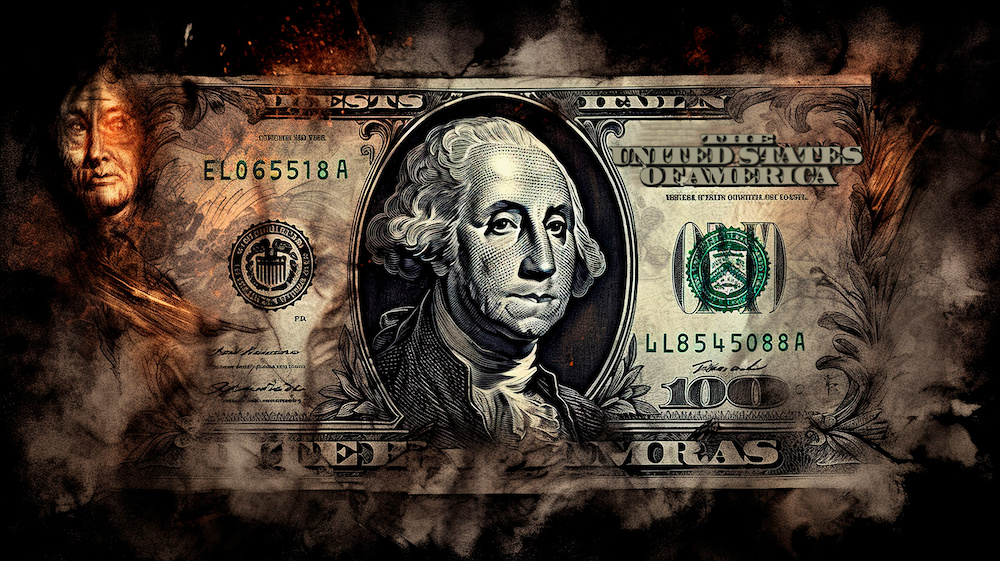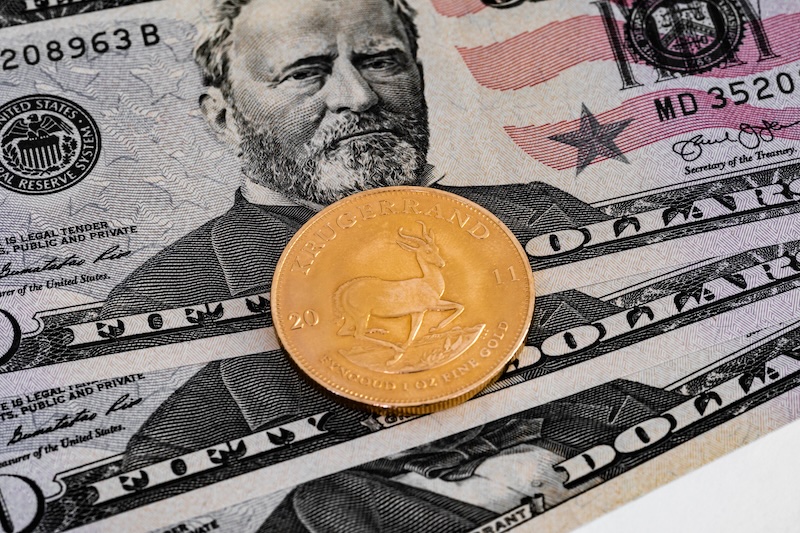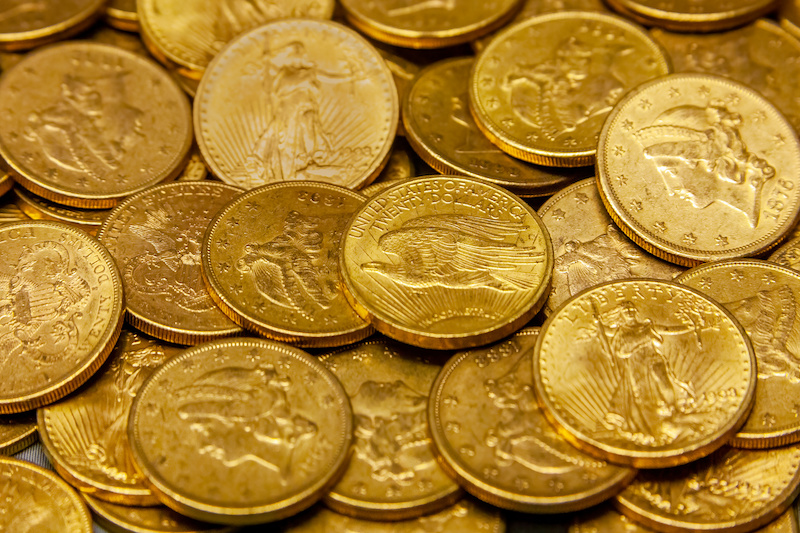Fiat currency, also known as fiat money, is a currency declared by a government to be legal tender and accepted as a medium of exchange within a specific country or region.
Unlike commodity money, which has intrinsic value because it is backed by gold or silver coins, fiat currency has no inherent value and is not backed by a physical commodity.
Instead, its value is established and maintained by government decree and the trust and confidence of the people who use it.
Modern currencies, including the US Dollar, European Euro, and the British Pound, are all examples of fiat currencies.
The United States began transitioning from the gold standard during the first half of the 20th century. During the Great Depression, the government confiscated all of the gold coins circulating throughout the economy and made it illegal for private citizens to own gold.
Many of the gold coins were melted into large-format gold bars and moved to the Gold Depository at Fort Knox, where they remain sealed to this day.
The dollar’s value is established and maintained through the authority and credibility of the Federal Reserve. It’s a social agreement that people will accept the currency in exchange for goods and services.
Commodity Backed Money
Fiat currency has no inherent value as it is not backed by a physical commodity. Commodity-backed money, which is backed by gold, silver, or other commodities, has value due to its intrinsic properties.
The Treasury and Federal Reserve have the authority to control the supply of dollars. They can print more money or remove it from circulation, influencing factors like inflation and deflation.
The Fed and Treasury Department regulators have a few monetary policy tools to manage the economy. These include adjusting interest rates, implementing quantitative easing, and regulating the money supply to influence economic conditions.
The video below, produced by the St. Louis Federal Reserve following the 2008 Financial Crisis, provides a comparison between fiat money versus commodity-backed money.
One of the significant concerns with fiat money is the potential for inflation, which we’ve been experiencing for the last few years. It’s been a cyclical problem with dollar since the creation of the Federal Reserve in 1913.
Since fiat money is not backed by gold or silver, governments and central banks can print money at will. If the money supply increases faster than the growth of goods and services in the economy, it will lead to inflation, eroding the purchasing power of money and causing prices to rise.
Unlike commodity money like gold or silver, which have intrinsic value, fiat money has no inherent value. Its value is solely based on people’s trust and confidence in the issuing government. If that trust wanes, the value of fiat currency can be at risk, and individuals and everyday workers will continue to see the purchasing power of the dollar diminish over the years. This can impact the ability to save for the future and plan for retirement.
While physical coins and banknotes are common fiat currency, many of today’s transactions are conducted digitally using electronic forms of money, such as online banking, credit cards, and digital wallets.
Fiat Money CBDC
The Federal Reserve and other central banks are pushing for the adoption of a central bank digital currency (CBDC), which would allow the government to control how you spend your money and what you can purchase.
While this can be used to manage the economy, it also means that economic decisions are concentrated in the hands of a few, which will lead to potential abuse or mismanagement.
CBDC transactions can be easily tracked and monitored by the central bank and government authorities, raising significant concerns about individuals’ financial privacy and the potential for government surveillance.
CBDCs’ digital nature also makes them vulnerable to cyberattacks and hacking attempts. A successful breach could lead to the theft of funds or disruption of the financial system.
The introduction of CBDCs will continue to disrupt traditional banking and payment systems, affecting financial institutions and fintech companies.
CBDC allows central banks more direct control over monetary policy and money supply. Fiat currency is influenced by central bank policy but is also impacted by commercial banks and economic factors.
The introduction of CBDC requires additional technological infrastructure and regulatory frameworks for digital payments and security. In 2024, the Federal Reserve introduced the FedNow payment gateway system, requiring commercial banks to adopt this new payment system, which is part of the long-term launch plan.
Comparing Historical and Modern U.S. Inflation
Fiat Money and the Mechanics of Inflation
| Era | Money Creation Mechanism | Monetary Policy Framework |
|---|---|---|
| Pre-Fed (1775–1913) | Physical printing of unbacked notes; suspension of specie; war-driven issuance | No central bank; gold/silver standard; ad hoc treasury/fiscal control |
| Modern Fed Era (1913–present) | Digital money creation via QE, interest rate control, repo markets, bank reserves | Federal Reserve controls interest rates, balance sheet, inflation targeting |
Pre-Fed inflation was usually reactive. The government printed money during crises (like the Revolutionary War and the Civil War) without a long-term monetary strategy. Today, inflation is often engineered or mismanaged through intentional monetary policy (like low rates and QE) and stimulus-based fiscal expansion.
Causes of Fiat Inflation: Fiscal Panic vs. Money Policy Engineering
Modern inflation is systemic and policy-driven. Central banks try to stimulate or cool the economy, but their tools can overshoot — and when they do, inflation isn’t just transitory or temporary. It can stick for years, like we saw post-2020.
| Period | Peak Inflation | Duration | Notes |
|---|---|---|---|
| Continental Collapse (1770s) | >4000% | 7–8 years | Hyperinflation, fiat collapse |
| Civil War (Union) | ~100% cumulative | 4–5 years | Greenbacks devalued ~50% |
| 1970s Stagflation | ~13.5% CPI (1980) | ~10 years | Fed mismanagement, oil crisis, Nixon Shock |
| COVID/Post-COVID (2020–2023) | ~9.1% CPI (2022) | 2–3 years (so far) | Massive QE, supply shocks, fiscal injections |
While modern inflation hasn’t yet achieved hyperinflation levels, it can still erode purchasing power by double digits in just a few years. For those holding large cash reserves or long-duration bonds, the real losses are significant. Pre-Covid, the average monthly price of gold in 2019 was $1392.60 per troy ounce. By comparison, today’s gold price is trading at 3327.71.
Modern Fiat and the Future of Inflation
In the pre-Fed era, gold was the ultimate anchor. When attempts at fiat collapsed, those holding hard money survived.
In the modern era, the Fed’s central role means policy mistakes can ripple globally. Assets like gold, silver, real estate, and commodities often outperform when confidence in fiat weakens.
As Fed-driven shocks destabilize the global financial order, and trust in fiat currency declines, gold becomes the default safe-haven, not only for individual investors but also for sovereign wealth protection.
The world is watching the Fed burn credibility, and BRICS is buying gold in response.
The Fed can print money but can’t print oil, food, rare earth minerals, or semiconductors. So if supply chains seize, like what we experienced during COVID, or energy costs surge, like we saw during the 70’s oil crisis, inflation runs hot regardless of the Fed’s intent.
Final Word
Pre-Fed inflation was often chaotic, caused by desperation. Modern inflation is slower-burning but more systemic, shaped by central banks and massive fiscal interventions. Both erode purchasing power. Both reward those who own hard assets. And in both eras, those holding gold — not fiat — are the ones who keep control of their wealth.






